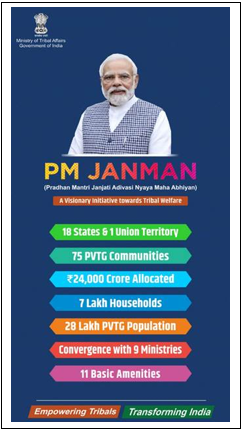You're all caught up—no notifications available.
Explore All Exams at KGS

All Exams
Explore All Exams at KGS
Khan Sir Courses
Geography I Polity I History | World Map I Indian Map I Economics I Biology
UPSC & State PSC
UPSC I BPSC I UP-PSC I MP-PSC
State Exams
UP I Bihar I MP | Rajasthan
NEET | JEE | CUET | Boards
NEET | JEE | CUET | Boards
Defence Exams
NDA I CDS I CAPF I AFCAT I SSB I Agniveer
Police Exams
UP SI | Bihar SI | Delhi Police | UP Constable
SSC Exams
CGL I CPO I CHSL I MTS I SSC GD I Delhi Police
Foundation Courses
Physics I Chemistry I Biology I History I Geography I Polity I NCERT I Math I English | Map I Reasoning
Railway Exams
RRB | RPF
Teaching Exams
TET | Teaching | UGC
Banking Exams
SBI | RBI | IBPS
Engineering Exams
Civil | Electrical | Mechanical
UGC NET
UGC NET/JRF
Current Affairs provides you with the best compilation of the Daily Current Affairs taking place across the globe: National, International, Sports, Science and Technology, Banking, Economy, Agreement, Appointments, Ranks, and Report and General Studies

Syllabus:
GS-2: Welfare schemes for vulnerable sections of the population by the Centre and States and the performance of these schemes; mechanisms, laws, institutions and Bodies constituted for the protection and betterment of these vulnerable sections.
Context: The Ministry of Tribal Affairs has written to the Registrar General and Census Commissioner of India, urging a separate Census enumeration for Particularly Vulnerable Tribal Groups (PVTGs).
Need for the Separate Census
• Marginalisation: PVTGs are among the most vulnerable and socio-economically deprived communities within Scheduled Tribes.
• Tailored Welfare: Accurate data is essential for designing and implementing focused schemes like PM-JANMAN.
• Underrepresented Data: The 2011 Census collected data for Scheduled Tribes as a whole but did not enumerate PVTGs separately.
• Unique Needs: Capturing household-level information on PVTGs’ demographic and socio-economic traits is vital for evidence-based policymaking.
• Classification: In 2011 census, around 40 PVTGs were listed as single entries under the broader ST category, masking their distinct vulnerabilities.
• Policy Planning: Separate enumeration would ensure better monitoring, fund allocation, and impact assessment of tribal welfare initiatives.
Pradhan Mantri Janjati Adivasi Nyaya Maha Abhiyan (PM JANMAN)
• Launched in 2023, PM-JANMAN seeks to improve the living conditions of the 75 PVTGs by providing comprehensive and inclusive support.
• The basic objective of the PM-JANMAN is to improve socio-economic conditions of the PVTGs, by saturating PVTG families and habitations with basic facilities and services.
• The scheme aims to improve the socio-economic status of PVTGs by bridging gaps in health, education, livelihoods; by improving basic infrastructure in PVTG communities, habitations, and families aligning with existing schemes
• Nine Union Ministries will converge through 11 critical interventions for the welfare of the PVTGs, with the Ministry of Tribal Affairs as the nodal ministry.
• The programme focuses on providing basic facilities such as housing, safe drinking water, education, healthcare and nutrition, along with better road and telecom connectivity, electricity for households that are still unelectrified and livelihood opportunities.
• The target is to cover these needs within three years, i.e., 2023-24 to 2025-26.
• The total budgetary outlay for the scheme is Rs 24,104 crore, with the central share amounting to Rs 15,336 crore and the state share being Rs 8,768 crore.

Particularly Vulnerable Tribal Groups (PVTGs)
• There are 75 PVTGs in India across 18 states and one Union Territory of Andaman and Nicobar Islands.
• Odisha has the highest number of PVTG communities (13) and the largest PVTG population, estimated at over 2.5 lakh.
• Based on the Dhebar Commission’s recommendations, the Government of India created a separate category called Primitive Tribal Groups (PTGs) in 1973, which were renamed Particularly Vulnerable Tribal Groups (PVTGs) in 2006.
• PVTGs have some basic characteristics: they are mostly homogenous, with a small population, relatively physically isolated, social institutions cast in a simple mould, absence of written language, relatively simple technology and a slower rate of change etc.
• The Government of India follows the following criteria for identification of PVTGs:
• According to Ministry of Tribal Affairs the estimated PVTG population is 45.56 lakh. Madhya Pradesh (12.28 lakh), Maharashtra (6.2 lakh) and Andhra Pradesh (4.9 lakh) are the top three in terms of PVTG population.
Sources:

Census for PVTGS

News In Short

29th Moon of Uranus

National Guidelines for Animal Blood Transfusion and Blood Banks

NCERT Books
Resources
We love learning. Through our innovative solutions, we encourage ourselves, our teams, and our Students to grow. We welcome and look for diverse perspectives and opinions because they enhance our decisions. We strive to understand the big picture and how we contribute to the company’s objectives. We approach challenges with optimism and harness the power of teamwork to accomplish our goals. These aren’t just pretty words to post on the office wall. This is who we are. It’s how we work. And it’s how we approach every interaction with each other and our Students.
Come with an open mind, hungry to learn, and you’ll experience unmatched personal and professional growth, a world of different backgrounds and perspectives, and the freedom to be you—every day. We strive to build and sustain diverse teams and foster a culture of belonging. Creating an inclusive environment where every students feels welcome, appreciated, and heard gives us something to feel (really) good about.
Get Free academic Counseling & Course Details
